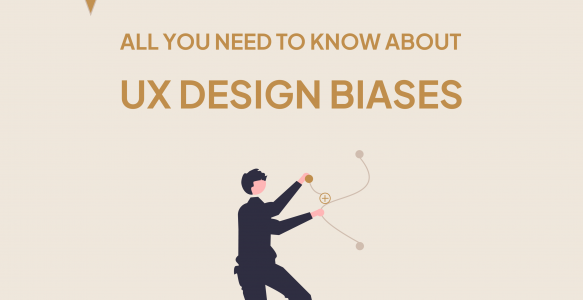In User Experience (UX) design, biases can significantly impact how designers perceive, interpret, and create interfaces, potentially influencing user interactions. Some biases commonly observed in UX include:
Confirmation Bias
Anchoring Bias
Availability Bias
Bandwagon Effect
Sunk Cost Fallacy
Halo Effect
Expert Blind Spot
Anchoring Bias
Availability Bias
Bandwagon Effect
Sunk Cost Fallacy
Halo Effect
Expert Blind Spot
Confirmation Bias
This occurs when designers tend to favor information that confirms their preconceptions or hypotheses about user behavior. It can lead to overlooking contradictory data, hindering a comprehensive understanding of user needs.
Anchoring Bias
Designers might overly rely on initial information or ideas, which act as an “anchor” for subsequent decisions. This can restrict exploring diverse design solutions or hinder adapting to new information.
Availability Bias
It involves designers’ tendency to rely heavily on information that’s easily accessible or readily available in their memory. This might lead to ignoring less prominent but equally important user needs or scenarios.
Bandwagon Effect
Designers may follow prevalent design trends or industry practices without critically evaluating their suitability for a specific project or user context. This can lead to generic or less innovative design solutions.
Sunk Cost Fallacy
Occurs when designers feel compelled to continue with a particular design approach or feature because they’ve invested time, effort, or resources into it, despite evidence suggesting it’s not optimal.
Halo Effect
This bias influences perceptions of a design based on a single positive or negative characteristic, overlooking other essential aspects. For instance, a visually appealing interface might be perceived as more usable overall, even if functionality is lacking.
Expert Blind Spot
Designers, being experts in their field, might overlook the
potential struggles or challenges that novice or less tech-savvy users might encounter. This can lead to assumptions about user capabilities that may not align with the actual user base.









